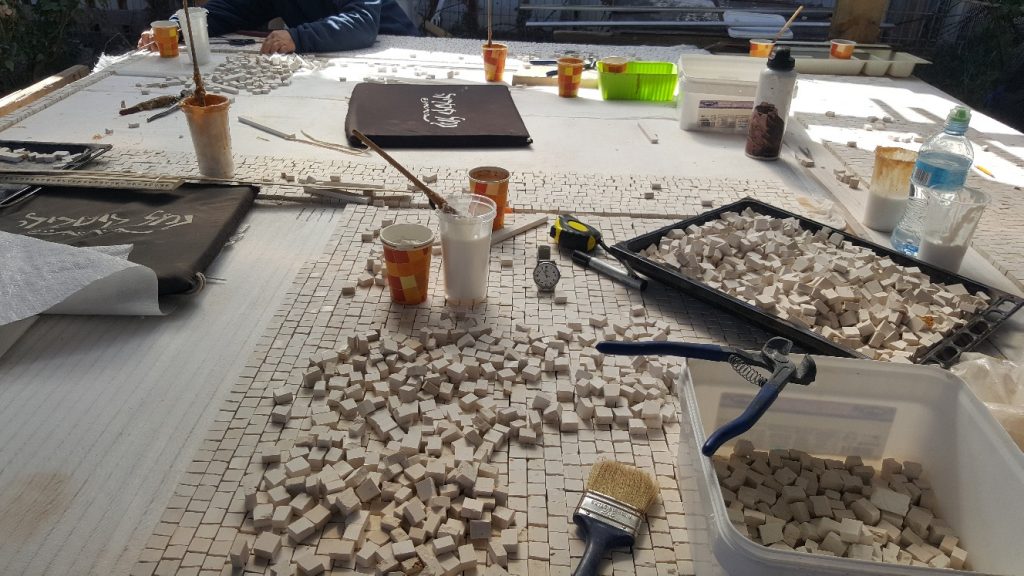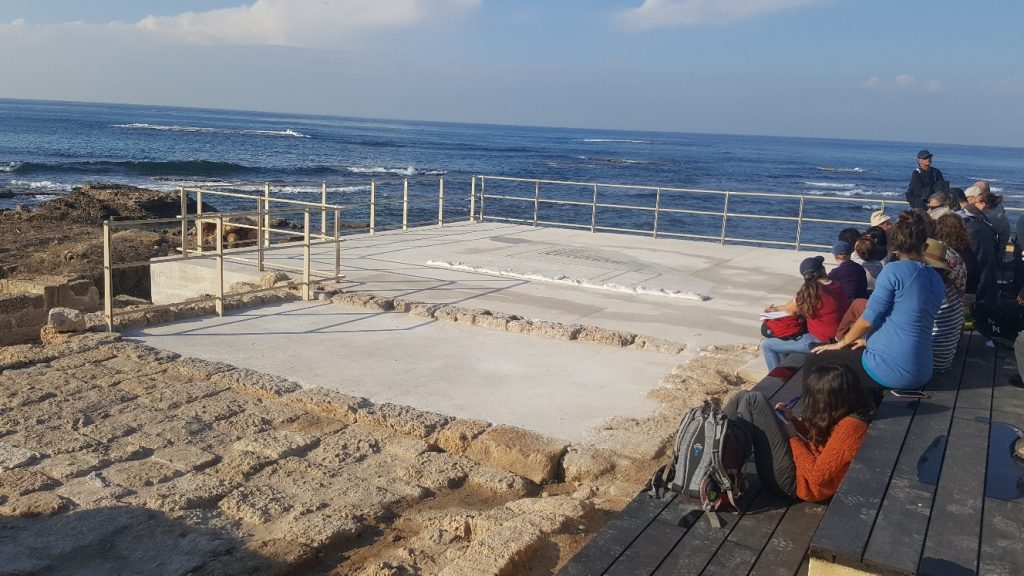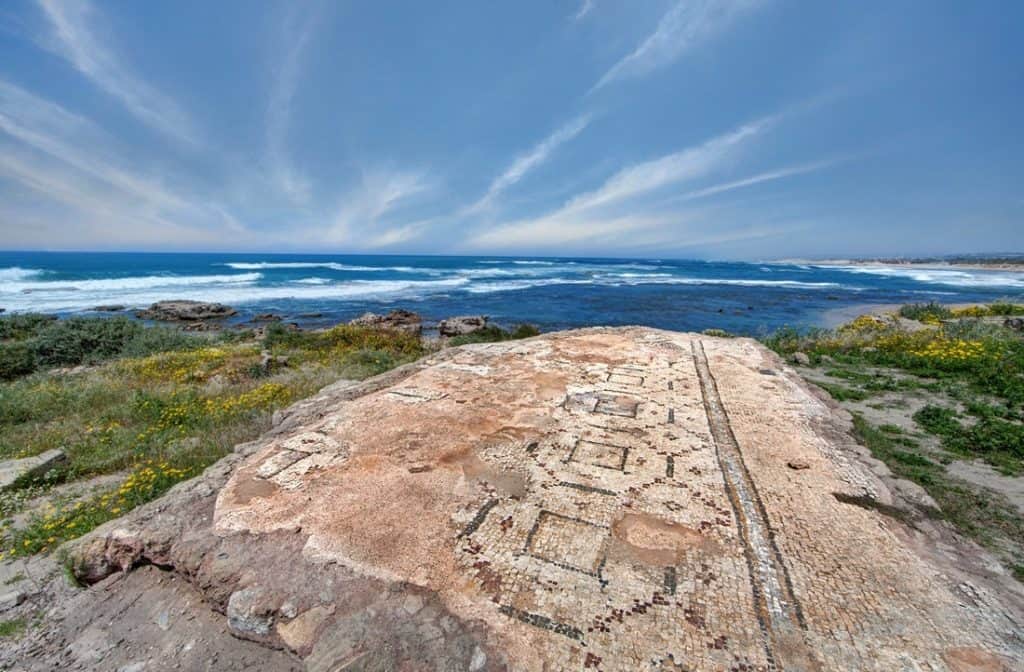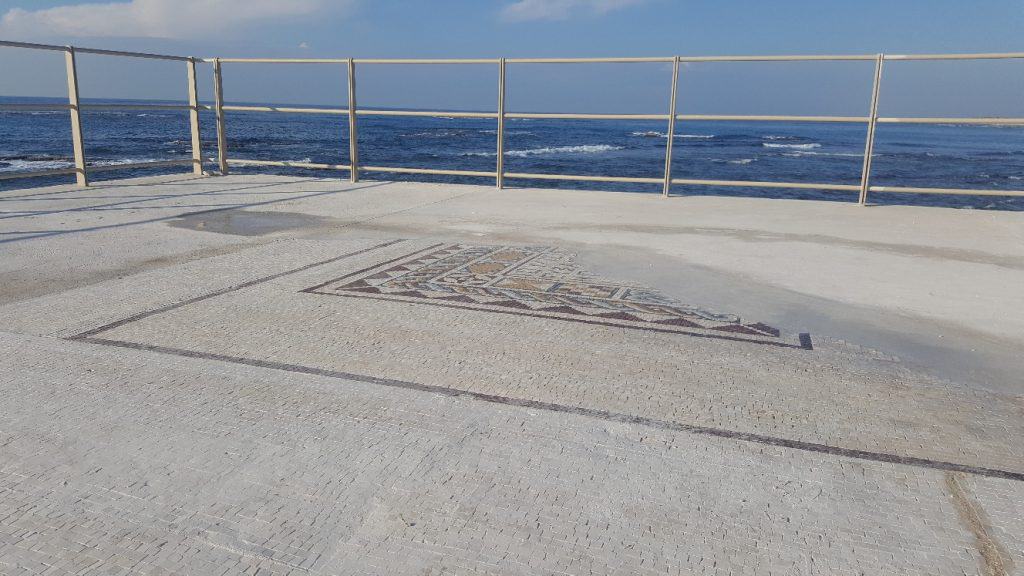The ancient synagogue dates back to the fourth and fifth centuries CE and served as a place of worship for the extensive community of Caesarea Jews. Some claim that the structure was built on the foundations of the “Knisata Demarduta” (“The Synagogue of the Rebellion”) where, according to biblical sages, the Great Revolt of the Jews against the Romans was ignited.
The story of the building is a complementary piece in the cultural mosaic of the Jews who lived in the pagan city, alongside Roman culture. They observed their religion in synagogues within the city, moving between openness and segregation as they coped with changes that came from overseas. The synagogue was first discovered in the 1940s. Archaeological excavations revealed finds with inscriptions of menorah symbols, marble fragments of a list of 24 shifts that priestly families (Cohanim) served in rotation for the Temple, and mosaics and inscriptions of dedications to donors.


During the first phase of the project, all remains were documented and analyzed in order to fully understand the structure, define the platforms, and grade the slope to the beach. These were used as the basis for conservation work, for stabilizing the slope and for installing required drains. In the second phase, work was carried out to preserve and restore the synagogue’s mosaics. Observation and access points for the public were developed as well as exhibits presenting content related to the Jewish heritage of ancient Caesarea.


